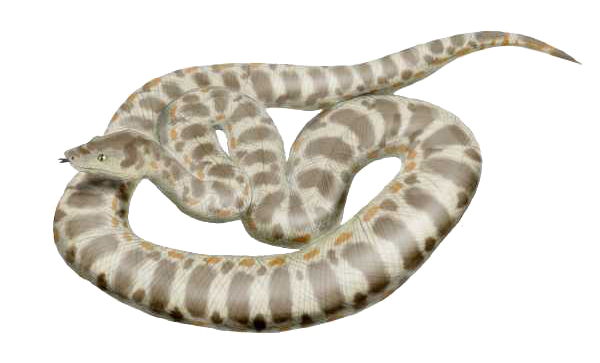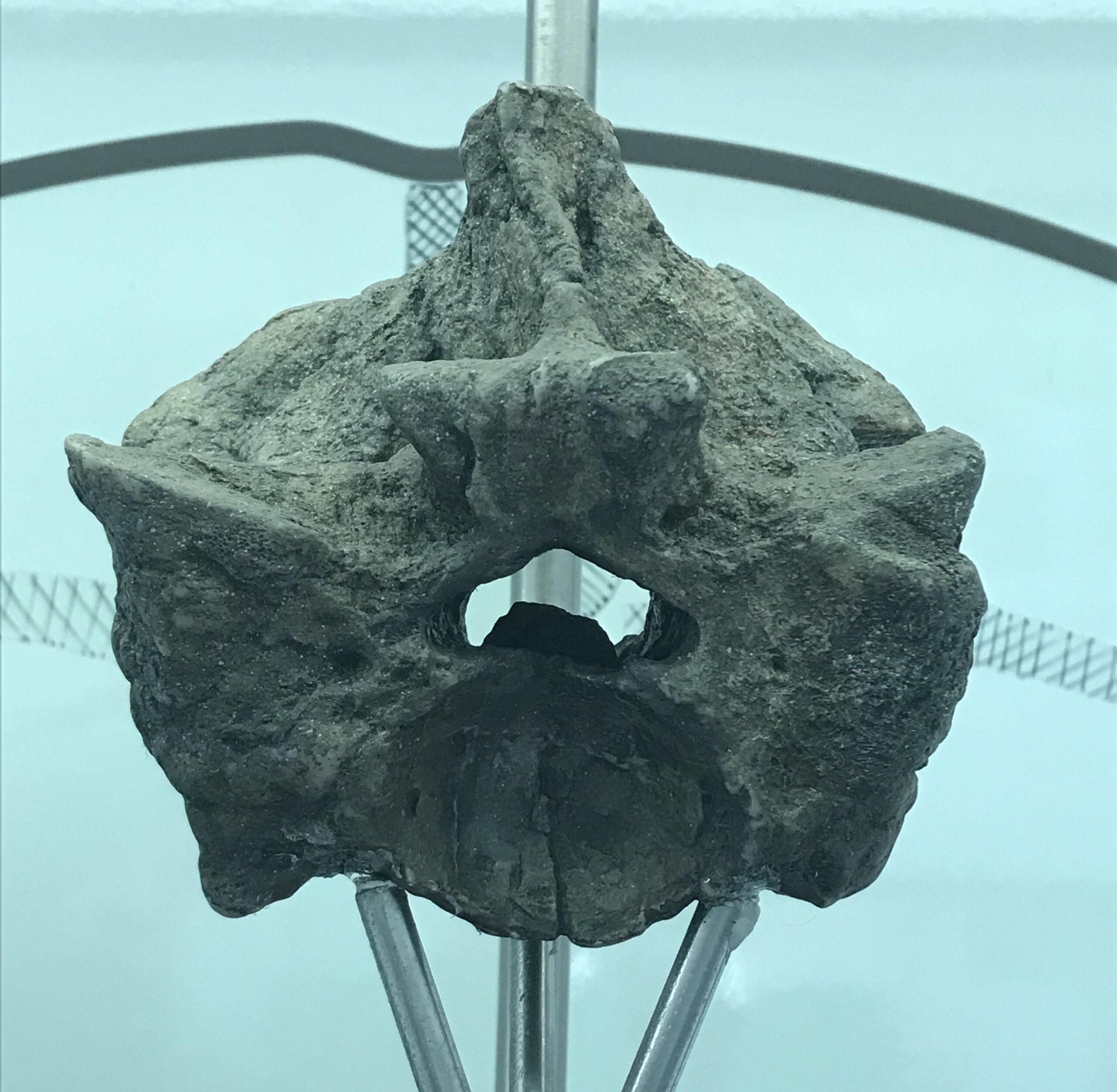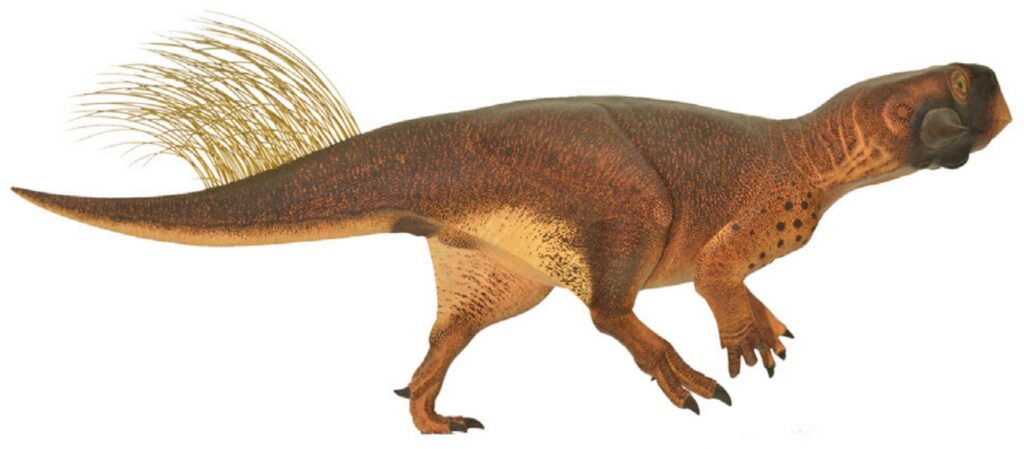Picture this: you’re walking through a steamy rainforest 60 million years ago when the ground beneath your feet begins to tremble. Through the dense vegetation, something massive slides past—a serpent so enormous it could wrap around a school bus twice and still have room to spare. This wasn’t just any snake. This was Titanoboa, the most colossal serpent that ever lived, and it ruled the ancient world with a power that would make today’s anacondas look like garden worms.
In the sweltering heat of prehistoric Colombia, where temperatures soared beyond anything we experience today, this monster snake didn’t just survive—it thrived. Stretching longer than a telephone pole and weighing as much as a small car, Titanoboa represents one of nature’s most incredible experiments in size and predatory power.
When Giants Ruled the Swamps
Titanoboa lived during the Paleocene epoch, roughly 58 to 60 million years ago, in what we now call the Cerrejón Formation of Colombia. This was a world recovering from the asteroid impact that wiped out the dinosaurs, and life was experimenting with size in ways we can barely imagine today.
The climate during this period was drastically different from our modern world. Temperatures averaged around 90 degrees Fahrenheit year-round, with humidity levels that would make the Amazon rainforest feel like a desert. These greenhouse conditions created the perfect environment for cold-blooded reptiles to grow to unprecedented sizes.
Without the massive dinosaurs dominating the landscape, ecological niches opened up like never before. Titanoboa seized this opportunity, evolving into the apex predator of its aquatic domain.
A Monster Beyond Comprehension
The sheer dimensions of Titanoboa challenge our understanding of what’s possible in the animal kingdom. Based on fossilized vertebrae discovered in Colombian coal mines, scientists estimate this prehistoric giant reached lengths of up to 42 feet and weighed approximately 2,500 pounds.
To put this in perspective, imagine a snake longer than a city bus and heavier than a small elephant. Modern reticulated pythons, the longest snakes alive today, rarely exceed 30 feet, making Titanoboa roughly 40% longer than even the most massive contemporary serpents.
The snake’s body diameter likely measured around 3 feet at its thickest point. This means Titanoboa could have easily swallowed animals the size of large crocodiles, which were abundant in its prehistoric habitat.
The Science Behind the Size
Understanding how Titanoboa achieved such massive proportions requires diving into the relationship between temperature and reptilian physiology. Unlike mammals, reptiles are ectothermic, meaning their body temperature depends on their environment.
The warmer climate of the Paleocene epoch provided Titanoboa with the metabolic energy needed to sustain such an enormous body. Higher temperatures allowed for faster digestion, more efficient muscle function, and ultimately, the ability to grow larger than any snake before or since.
Scientists use a principle called Kleiber’s law to understand this relationship. Essentially, as temperature increases, so does the maximum possible size for cold-blooded animals. The prehistoric heat provided Titanoboa with a biological advantage that simply doesn’t exist in today’s cooler world.
Predator of the Ancient Waters
Titanoboa wasn’t just large—it was a perfectly evolved killing machine. Living in the vast wetlands of prehistoric South America, it shared its habitat with early crocodilians, large fish, and primitive mammals that had begun to diversify after the dinosaur extinction.
The snake’s hunting strategy likely involved ambush tactics similar to modern anacondas, but on a scale that defies imagination. Titanoboa would have lurked in murky waters, using its incredible strength to constrict prey that could include 12-foot crocodiles.
Unlike venomous snakes that kill with poison, Titanoboa was a constrictor. It would wrap its massive coils around prey, squeezing with enough force to stop blood flow and breathing. The pressure exerted by this prehistoric giant would have been absolutely crushing—literally.
The Fossil Discovery That Changed Everything

The story of Titanoboa’s discovery reads like an adventure novel. In 2009, paleontologist Jason Head and his team were examining fossils from the Cerrejón coal mine in Colombia when they stumbled upon vertebrae that didn’t match any known species.
The bones were massive—far larger than any snake fossils previously discovered. Initial measurements suggested an animal of impossible proportions, leading to intense scientific debate about whether such a creature could have actually existed.
After years of careful analysis and comparison with modern snake anatomy, the team confirmed their incredible finding. They had discovered the remains of the largest snake that ever lived, revolutionizing our understanding of prehistoric ecosystems.
Reconstructing a Monster
Piecing together Titanoboa’s appearance required innovative scientific techniques and educated guesswork based on modern snake anatomy. Since snakes have hundreds of vertebrae, scientists could estimate the creature’s total length by examining the size and position of individual bones.
The reconstruction process involved creating detailed computer models and comparing fossil measurements with living snake species. This painstaking work revealed not just Titanoboa’s size, but also insights into how it moved and hunted.
Artists and scientists collaborated to create visual representations of this prehistoric giant, bringing Titanoboa to life in museums and documentaries worldwide. These reconstructions help us visualize a creature that seems almost too fantastic to be real.
A World Built for Giants
The ecosystem that supported Titanoboa was radically different from anything we see today. The Cerrejón Formation was a vast tropical wetland, filled with winding rivers, dense forests, and abundant prey species.
This prehistoric paradise supported not just giant snakes, but also enormous turtles, massive crocodilians, and the early ancestors of many modern mammal groups. The biodiversity was staggering, with new species evolving rapidly to fill ecological niches left vacant by the dinosaurs.
The plant life was equally impressive, with massive trees and dense vegetation creating a greenhouse effect that maintained the warm, humid conditions Titanoboa needed to thrive. This was truly a world built for giants.
The Physics of Giant Serpents
Creating a snake the size of Titanoboa required overcoming significant physical challenges. The larger an animal gets, the more difficult it becomes to support its own weight and circulate blood throughout its body.
Titanoboa’s spine had to be incredibly strong to support its massive body both in water and on land. The vertebrae show adaptations that allowed for exceptional flexibility while maintaining structural integrity—a remarkable feat of evolutionary engineering.
The snake’s circulatory system would have been equally impressive, requiring a powerful heart and specialized blood vessels to pump blood through such an enormous body. These adaptations represent millions of years of evolutionary refinement.
What Did Titanoboa Actually Eat?
With its massive size came an equally massive appetite. Titanoboa likely fed on a variety of large prey species that inhabited its aquatic domain, including primitive crocodilians, large fish, and early mammals.
The snake’s jaw structure suggests it could unhinge its mouth similar to modern pythons, allowing it to swallow prey much larger than its head. A meal might have included crocodiles measuring 12 feet or more—creatures that would be apex predators in their own right.
After consuming such a massive meal, Titanoboa could have gone months without eating again, similar to large modern constrictors. This feast-or-famine lifestyle was perfectly suited to an environment where large prey was abundant but unpredictable.
The Climate Connection

Titanoboa’s existence provides crucial insights into Earth’s ancient climate and the relationship between temperature and biodiversity. The snake’s massive size serves as a biological thermometer, indicating just how much warmer the world was 60 million years ago.
Scientists use Titanoboa’s dimensions to estimate ancient temperatures with remarkable precision. The calculations suggest that tropical temperatures during the Paleocene were significantly higher than previously thought, with implications for understanding climate change.
This research has modern relevance as well, helping scientists predict how current global warming might affect the distribution and size of cold-blooded animals in tropical regions.
Modern Relatives and Living Shadows
While no modern snake approaches Titanoboa’s incredible size, its closest living relatives give us insights into how this prehistoric giant might have behaved. Green anacondas and reticulated pythons share similar body proportions and hunting strategies.
These modern giants, though dwarfed by their prehistoric cousin, still demonstrate the incredible adaptability and power of large constrictors. Watching a 20-foot anaconda hunt provides a glimpse into how Titanoboa might have dominated its ancient ecosystem.
The comparison also highlights just how extraordinary Titanoboa was—even our largest modern snakes seem almost modest next to this prehistoric colossus.
The Mystery of Extinction

Like all prehistoric giants, Titanoboa eventually vanished from Earth, but the reasons for its extinction remain partly mysterious. Climate change likely played a crucial role, as global temperatures began to cool during the Eocene epoch.
As temperatures dropped, the metabolic advantages that allowed Titanoboa to grow so large gradually disappeared. Smaller, more efficient predators may have outcompeted the giant snake in the changing environment.
The transformation of South American ecosystems from vast wetlands to more diverse habitats also reduced the type of aquatic environment that Titanoboa dominated. Sometimes, being perfectly adapted to one environment becomes a disadvantage when that environment disappears.
Legacy of the Giant
Titanoboa’s discovery has transformed our understanding of prehistoric life and the limits of animal size. The snake represents a pinnacle of reptilian evolution—a creature that pushed the boundaries of what’s physically possible for a serpent.
Beyond its scientific importance, Titanoboa captures our imagination like few other prehistoric creatures. It represents the raw power and mystery of ancient Earth, reminding us that our planet once hosted life forms that seem almost mythological.
The ongoing study of Titanoboa continues to yield new insights into evolution, climate science, and the incredible diversity of life that has existed on Earth. Each new discovery adds another piece to the puzzle of this remarkable creature.
Conclusion: Echoes from an Ancient World
Titanoboa stands as one of nature’s most incredible achievements—a serpent so massive it could have made a meal of modern crocodiles without breaking a sweat. This prehistoric giant reminds us that Earth’s history is filled with creatures that challenge our understanding of what’s possible in the natural world.
The snake’s existence reveals the profound impact of climate on evolution and the remarkable ways life adapts to fill every available niche. In a world recovering from mass extinction, Titanoboa seized its opportunity and became one of the most formidable predators ever to slide across our planet.
Today, as we face our own climate challenges, Titanoboa serves as both a warning and a wonder—proof that dramatic environmental changes can create opportunities for life to evolve in extraordinary directions. What other giants might emerge from the changing conditions of our modern world?




